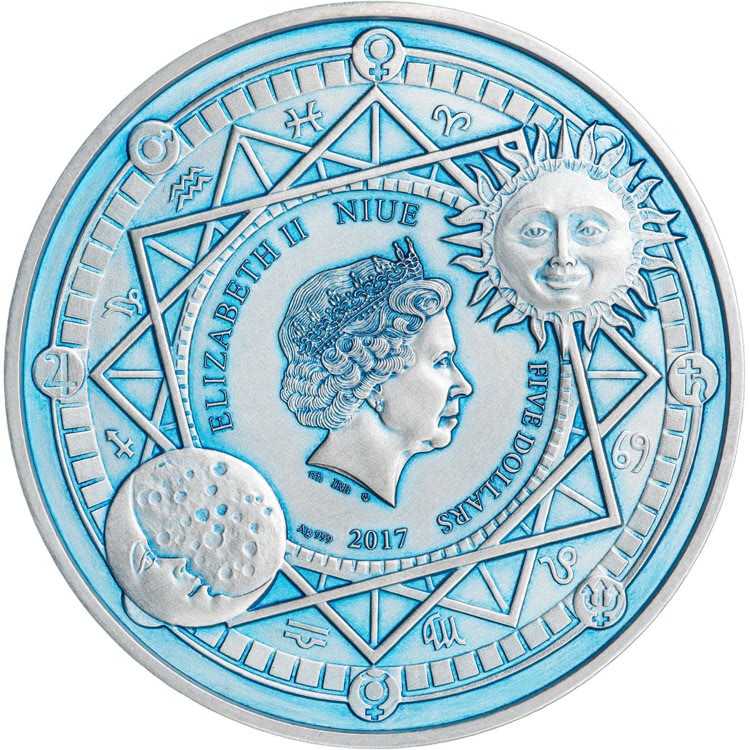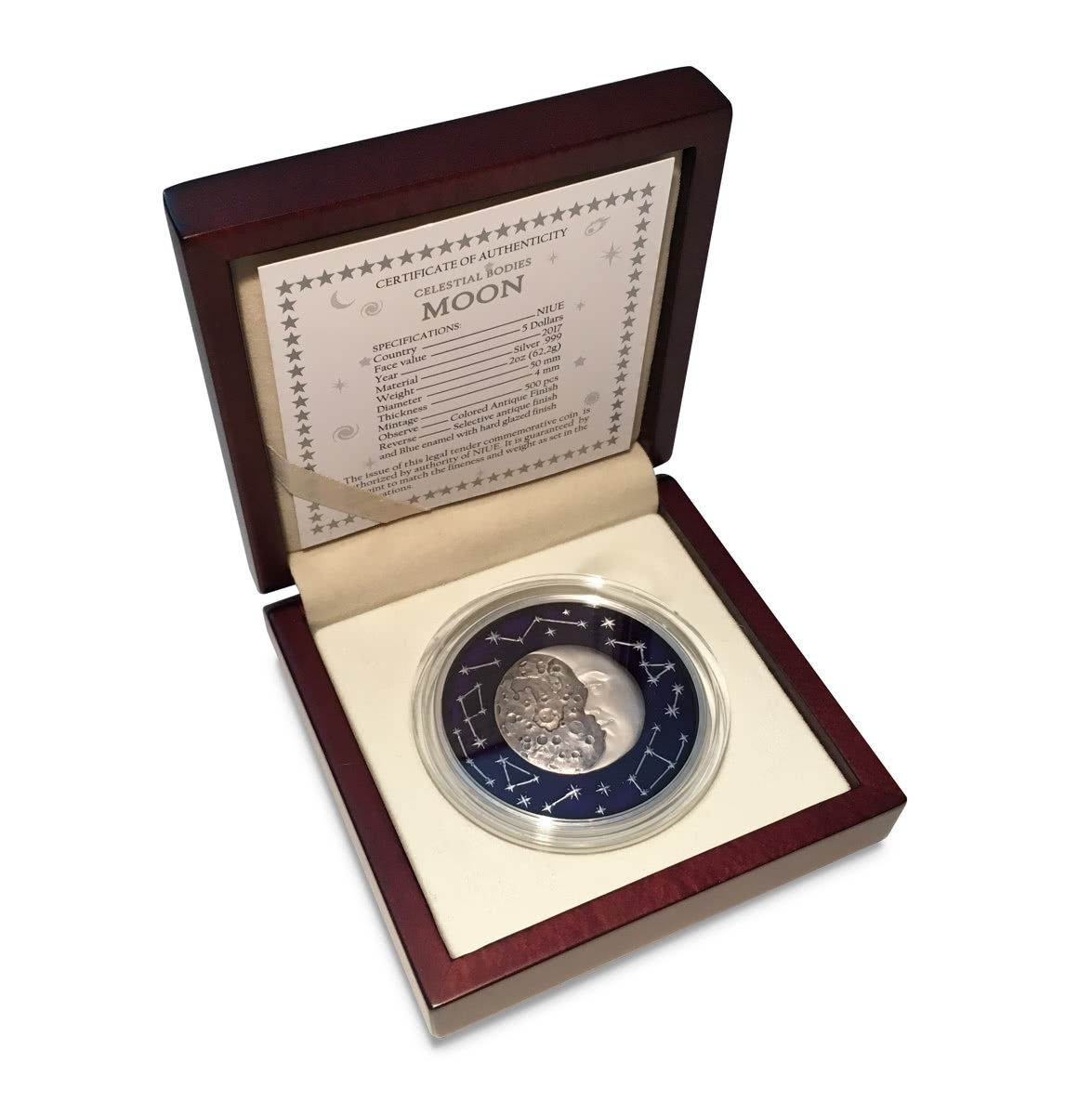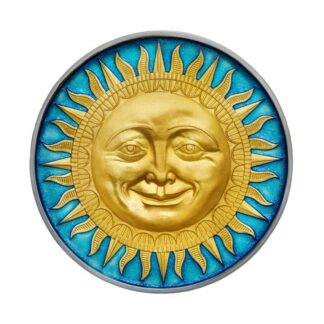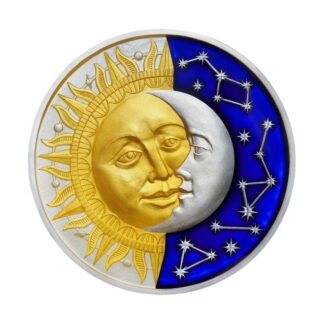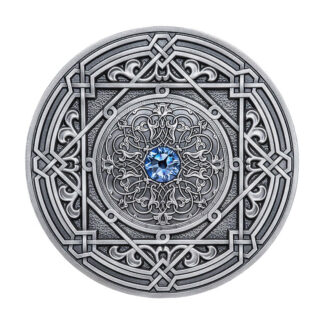Description
The Moon is an astronomical body that orbits planet Earth, being Earth’s only permanent natural satellite. It is the fifth-largest natural satellite in the Solar System, and the largest among planetary satellites relative to the size of the planet that it orbits (its primary). Following Jupiter’s satellite Io, the Moon is second-densest satellite among those whose densities are known.
The Moon is thought to have formed about 4.51 billion years ago, not long after Earth. There are several hypotheses for its origin; the most widely accepted explanation is that the Moon formed from the debris left over after a giant impact between Earth and a Mars-sized body called Theia.
The Moon is in synchronous rotation with Earth, always showing the same face, with its near side marked by dark volcanic maria that fill the spaces between the bright ancient crustal highlands and the prominent impact craters. It is the second-brightest regularly visible celestial object in Earth’s sky, after the Sun, as measured by illuminance on Earth’s surface. Its surface is actually dark, although compared to the night sky it appears very bright, with a reflectance just slightly higher than that of worn asphalt. Its prominence in the sky and its regular cycle of phases have made the Moon an important cultural influence since ancient times on language, calendars, art, mythology, and, it is often speculated, the menstrual cycles of the female of the human species.
The Soviet Union’s Luna programme was the first to reach the Moon with uncrewed spacecraft in 1959; the United States’ NASA Apollo program achieved the only crewed missions to date, beginning with the first crewed lunar orbiting mission by Apollo 8 in 1968, and six crewed lunar landings between 1969 and 1972, with the first being Apollo 11. These missions returned over 380 kg (840 lb) of lunar rocks, which have been used to develop a geological understanding of the Moon’s origin, the formation of its internal structure, and its subsequent history. Since the Apollo 17 mission in 1972, the Moon has been visited only by uncrewed spacecraft.
The Moonis the ruling planet of Cancer and is exalted in Taurus. In Roman mythology, the Moon was Luna, at times identified with Diana.
Astrologically speaking, the Moon is associated with a person’s emotional make-up, unconscious habits, rhythms, memories, moods and their ability to react and adapt to those around them. It is also associated with the mother, maternal instincts or the urge to nurture, the home, the need for security and the past, especially early experiences and childhood. The 1st-century poet Manilius described the Moon, or Luna, as melancholic. In medicine, the Moon is associated with the digestive system, stomach, breasts, the ovaries and menstruation (which does occur on a monthly cycle)[20] and the pancreas. Despite Manilius’s assignation, the Moon is commonly associated with the phlegmatic humor; it ruled the animal spirits. In modern astrology, the Moon is the primary native ruler of the fourth house.
The Moon or Luna is associated with Monday, the word Monday comes from the Old English word for Moon day or Moon’s day, and in Romance languages, the name for Monday comes from luna (e.g., luni in Romanian, lundi in French, lunes in Spanish and lunedi in Italian). Dante Alighieri associated the Moon with the liberal art of grammar. In Chinese astrology, the Moon represents Yin, the passive and receptive feminine life principle. In Indian astrology, the Moon is called Chandra or Soma and represents the mind, queenship and mother. The north lunar node (called Rahu) and the south lunar node (called Ketu) are considered to be of particular importance and are given an equal place alongside the seven classical planets as part of the nine navagraha.
The Moon has been the subject of many works of art and literature and the inspiration for countless others. It is a motif in the visual arts, the performing arts, poetry, prose and music.


